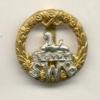For the past few months I have been having major hardware issues..
mainly with the south bridge and hard drive areas.
I have been getting errors like this one for example:
DRIVER_CORRUPTED_EXPOOL (c5)
An attempt was made to access a pageable (or completely invalid) address at an
interrupt request level (IRQL) that is too high. This is
caused by drivers that have corrupted the system pool. Run the driver
verifier against any new (or suspect) drivers, and if that doesn't turn up
the culprit, then use gflags to enable special pool.
Arguments:
Arg1: ffe7006d, memory referenced
Arg2: 00000002, IRQL
Arg3: 00000000, value 0 = read operation, 1 = write operation
Arg4: 8054a0ba, address which referenced memory
FAULTING_IP:
nt!ExDeferredFreePool+b4
8054a0ba 8b10 mov edx,dword ptr [eax]
DEFAULT_BUCKET_ID: DRIVER_FAULT
PROCESS_NAME: firefox.exe
TRAP_FRAME: aebb57d8 -- (.trap 0xffffffffaebb57d8)
ErrCode = 00000000
eax=0000000f ebx=0000000e ecx=dd851c00 edx=00000000 esi=8a5b8020 edi=00000000
eip=80569209 esp=aebb584c ebp=aebb5898 iopl=0 nv up ei ng nz ac po cy
cs=0008 ss=0010 ds=0023 es=0023 fs=0030 gs=0000 efl=00010293
nt!CcMapData+0xef:
Page a61d9 not present in the dump file. Type ".hh dbgerr004" for details
80569209 8a0c0a mov cl,byte ptr [edx+ecx] ds:0023:dd851c00=??
Resetting default scope
LAST_CONTROL_TRANSFER: from 8054a0ba to 805444e8
SYMBOL_STACK_INDEX: 1
SYMBOL_NAME: nt!ExDeferredFreePool+b4
FOLLOWUP_NAME: Pool_corruption
IMAGE_NAME: Pool_Corruption
DEBUG_FLR_IMAGE_TIMESTAMP: 0
MODULE_NAME: Pool_Corruption
FAILURE_BUCKET_ID: 0xC5_2_VRF_nt!ExDeferredFreePool+b4
BUCKET_ID: 0xC5_2_VRF_nt!ExDeferredFreePool+b4
For days I have been multiple ID events:
Example
7/22/2012 10:25:30 PM
EVENT ID : 11
Thev driver detected a controller error on \Device\Harddisk2\D.
This ID event happened 17 times in one day.. from a period of the time listed above to the end time of 10:29 PM
I also got multiple A parity error was detected on \Device\Ide\IdePort3. errors..
including ID events :
57 The system failed to flush data to the transaction log. Corruption may occur.
So.. I decided to replace my C Drive cable. because disk 2 was actually the C:\ Drive with the operating system..
I had no more problems for a while now.. for nearly a week. then this happened.. just today...
ID: 12
The device 'ST3300622AS' (IDE\DiskST3300622AS_____________________________3.AAD___\5&12b1a7d3&0&0.0.0) disappeared from the system without first being prepared for removal.
ID : 12
The device 'Primary IDE Channel' (PCIIDE\IDEChannel\4&1033e3e0&0&0) disappeared from the system without first being prepared for removal.
ID 12 with the model ST3300622AS : how in the heck is that possible? That is an internal Sata Drive...
What in the world could be causing that... ? I came back this morning after I woke up and refreshed the system.. the hard drive returned back into the system management and device manager..
Please.. anyone with help. I would in great gratitude ....
Sincerely,
Brickstin
P.S : My apologies if I wrote in the wrong section or did not properly post: I am completely new to this form and some what flighty and having an anxiety attack over this situation: this computer is my life line
Edit : 1:16 PM 7/31/2012
Here is my setup information I forgot to include that..
Processor(s)
Number of processors 1
Number of cores 1 per processor
Number of threads 2 per processor
Name Intel Pentium 4
Code Name Prescott
Specification Intel® Pentium® 4 CPU 3.20GHz
Package Socket 478 mPGA
Family/Model/Stepping F.4.1
Extended Family/Model F.4
Core Stepping E0
Technology 90 nm
Core Speed 3192.1 MHz
Multiplier x Bus speed 16.0 x 199.5 MHz
Rated Bus speed 798.0 MHz
Stock frequency 3200 MHz
Instruction sets MMX, SSE, SSE2, SSE3
L1 Data cache (per processor) 16 KBytes, 8-way set associative, 64-byte line size
Trace cache (per processor) 12 Kuops, 8-way set associative
L2 cache (per processor) 1024 KBytes, 8-way set associative, 64-byte line size
Chipset & Memory
Northbridge Intel i865P/PE/G/i848P rev. A2
Southbridge Intel 82801EB (ICH5) rev. 02
Graphic Interface AGP
AGP Revision 3.0
AGP Transfer Rate 8x
AGP Side Band Addressing supported, enabled
Memory Type DDR
Memory Size 4096 MBytes
Memory Frequency 199.5 MHz (1:1)
CAS# Latency (tCL) 3.0 clocks
RAS# to CAS# (tRCD) 3 clocks
RAS# Precharge (tRP) 3 clocks
Cycle Time (tRAS) 8 clocks
Performance Mode enabled
System
System Manufacturer IBM
System Name 814822U
System S/N KCCK6FH
Mainboard Vendor Intel
Mainboard Model D865GKD
BIOS Vendor IBM
BIOS Version 2CKT25AUS
BIOS Date 01/21/2008
Memory SPD
Module 1 DDR, PC3200 (200 MHz), 1024 MBytes, Corsair
Module 2 DDR, PC3200 (200 MHz), 1024 MBytes, Crucial Technology
Module 3 DDR, PC3200 (200 MHz), 1024 MBytes, Micron Technology
Module 4 DDR, PC3200 (200 MHz), 1024 MBytes, Micron Technology
Software
Windows Version Microsoft Windows XP Professional Service Pack 2 (Build 2600)
DirectX Version 9.0c
Edited by Brickstin, 31 July 2012 - 11:36 AM.


















 Sign In
Sign In Create Account
Create Account

